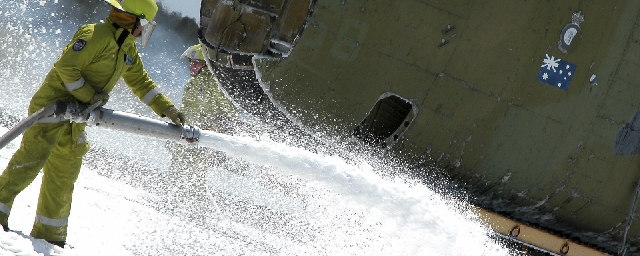PFAS Contamination: An On-Going Concern
PFAS contamination at Australian airport and defence facilities continues to generate considerable public concern. Recent media focus on PFAS contaminated drinking water in the Northern Territory town of Katherine highlight community fears while also illustrating the complexities of assessing and managing PFAS impacted sites.
In the last three years PFAS investigations have been instigated at 22 defence sites. In the most prominent cases including, Williamtown in New South Wales, Oakey in Queensland and Tindal in the Northern Territory, PFAS contamination has moved beyond site boundaries into surrounding areas. Uncertainty over the actual human health and environmental effects of PFAS contamination has generated considerable fear over the potential health impacts for affected communities. This fear has been amplified by uncertainty on the best clean-up methods and the impact of growing management costs.
Contaminants of concern
PFAS compounds are highly persistent, bioaccumulate and potentially toxic to humans and the environment. The actual health effects of PFAS are debated, but some studies link the chemicals to higher rates of kidney and testicular cancer, higher cholesterol levels and adverse immune effects.
Even though considerable research on the impacts of PFAS on human health and the environment is underway, only incomplete information surrounding the occurrence, fate and toxicity of PFAS in Australia is available. Likewise, the persistency of PFAS and its mobility in water make it difficult contaminant to deal with and the best management and remediation methods are still emerging.
A scientific challenge
PFAS is a complex contaminant and challenging to measure in the environment. High profile contamination cases such as Williamtown, Oakey and Tindal RAAF Bases are driving efforts for new detection methods and remediation techniques which are vital for improving data reliability and risk management. Geo-Logix has worked with a number of analytical laboratories to improve testing protocols and also supported field trials for a new water treatment method.
Emerging regulatory environment
As the assessment and management of PFAS contamination in soil and groundwater is an emerging science, formal regulations for the assessment of PFAS in soils and water are not yet available in Australia. Consequently, various organisations have issued documents to provide interim soil, groundwater and surface water screening levels as well as ‘trigger point values’ to help prioritise site management. These guidance documents are commonly reviewed and updated as scientific advances are integrated with government policy.
At present, the Heads of EPAs Australia and New Zealand (HEPA) and the Australian Government Department of the Environment and Energy are collaborating to develop a nationally consistent approach to the environmental regulation of PFAS. A consultation draft for a PFAS National Environmental Management Plan was issued for public comment in September 2017 and is expected to provide clearer guidance when formally endorsed in 2018.
Contamination assessment
In Australia, PFAS contamination has mostly been identified at airports, military bases, and other sites with fire-fighting training facilities. It has also been detected at industrial sites such as those used for chrome-plating, petrochemical storage and textile manufacturing.
Geo-Logix is working on a number of PFAS contaminated sites in New South Wales and Queensland and offers considerable experience in sampling strategies that take account of PFAS mobility characteristics. If you would like further information on PFAS contamination testing or remediation services, contact Ben Pearce at bpearce@geo-logix.com.au.

